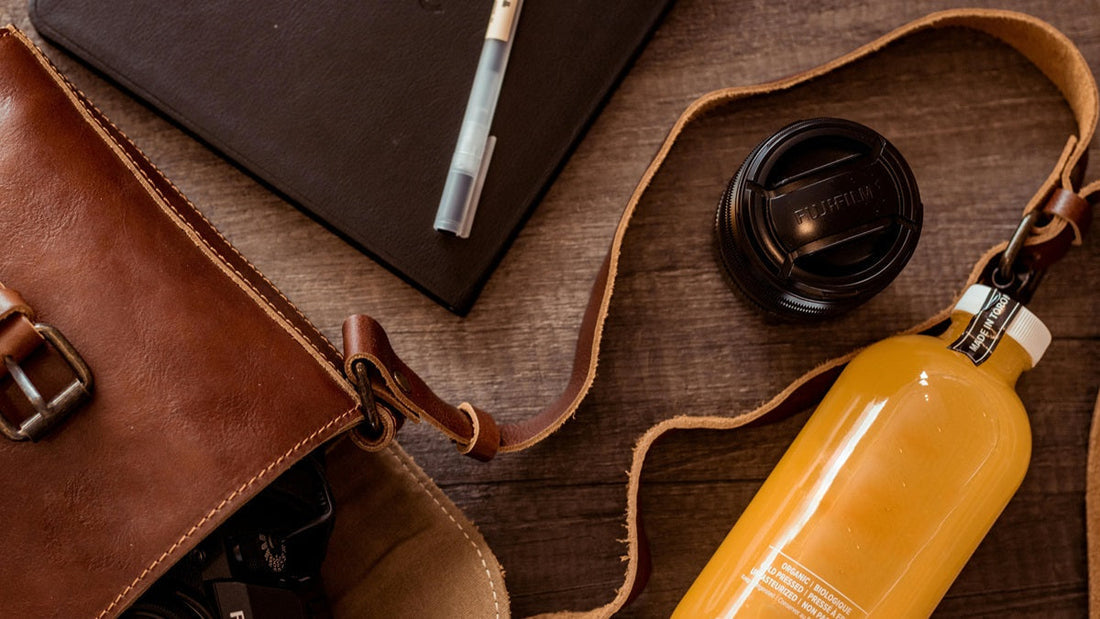
How to Care for Your Leather Goods: Pro Tips & Practical Routines from LeatherLuxe
Leather is one of the few materials that looks better with time—if it’s cared for correctly. Whether you’ve chosen a top-grain handbag, a structured satchel, a barrel bag, or a clutch, a few smart habits will keep your LeatherLuxe piece supple, clean, and beautifully finished for years. In this comprehensive guide, you’ll learn exactly how to clean, condition, protect, and store leather (including suede & nubuck), how to handle common stains, and how to avoid the mistakes that shorten a bag’s life.
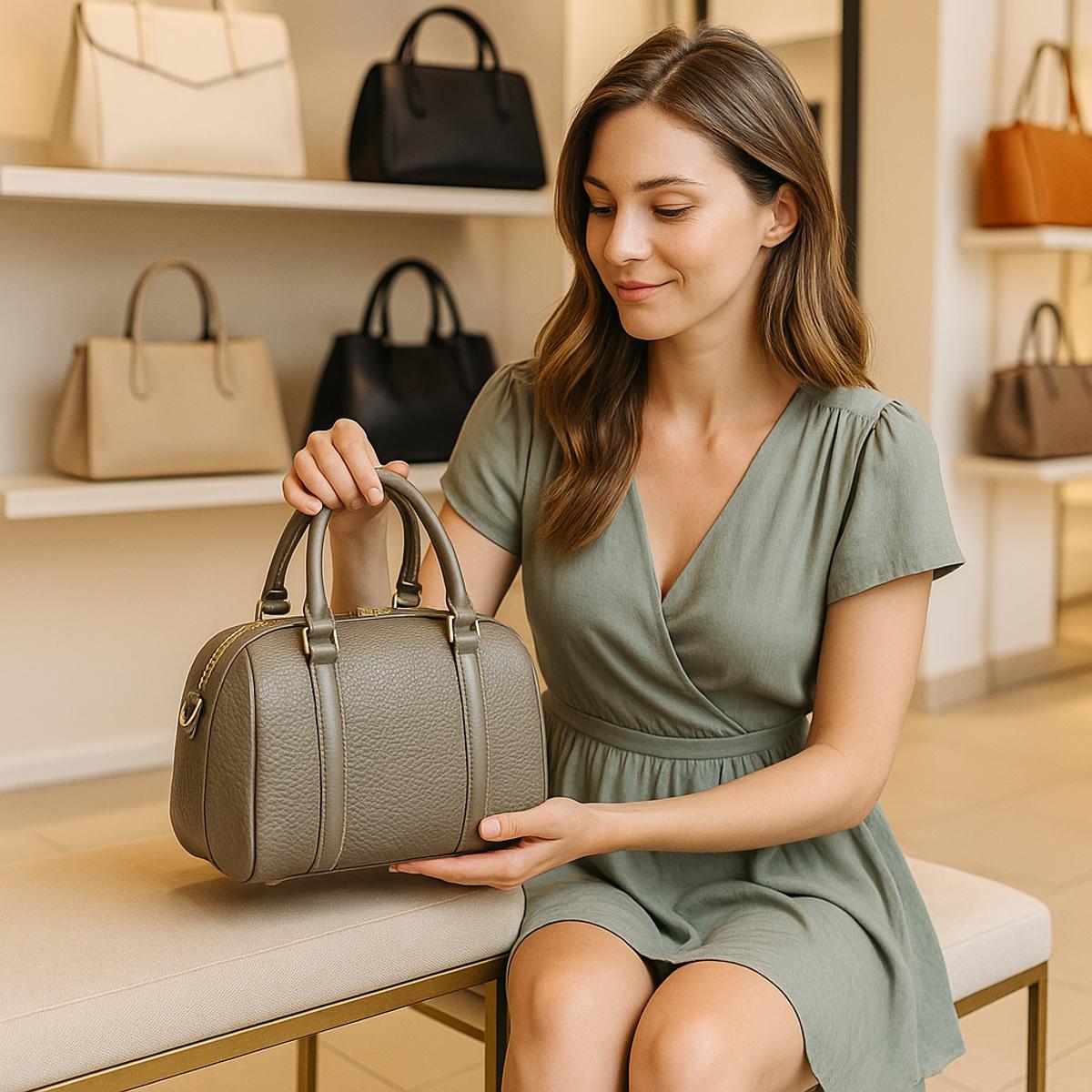
1) Know your leather (why finish matters)
Most handbags use one of these finishes:
- Aniline: Open-pore, natural look and feel. Gorgeous patina over time, but more absorbent and sensitive to stains and water.
- Semi-aniline: A thin protective layer preserves much of the natural look while adding light resistance to wear and stains.
- Pigmented (protected): Uniform color with a protective topcoat. Most resistant to scuffs and everyday spills; easiest to maintain.
Why it matters: Aniline needs gentler, more conservative cleaning and light, careful conditioning. Protected (pigmented) leathers tolerate mild cleaners and are simpler to maintain. Nubuck and suede (see below) require different tools and sprays.
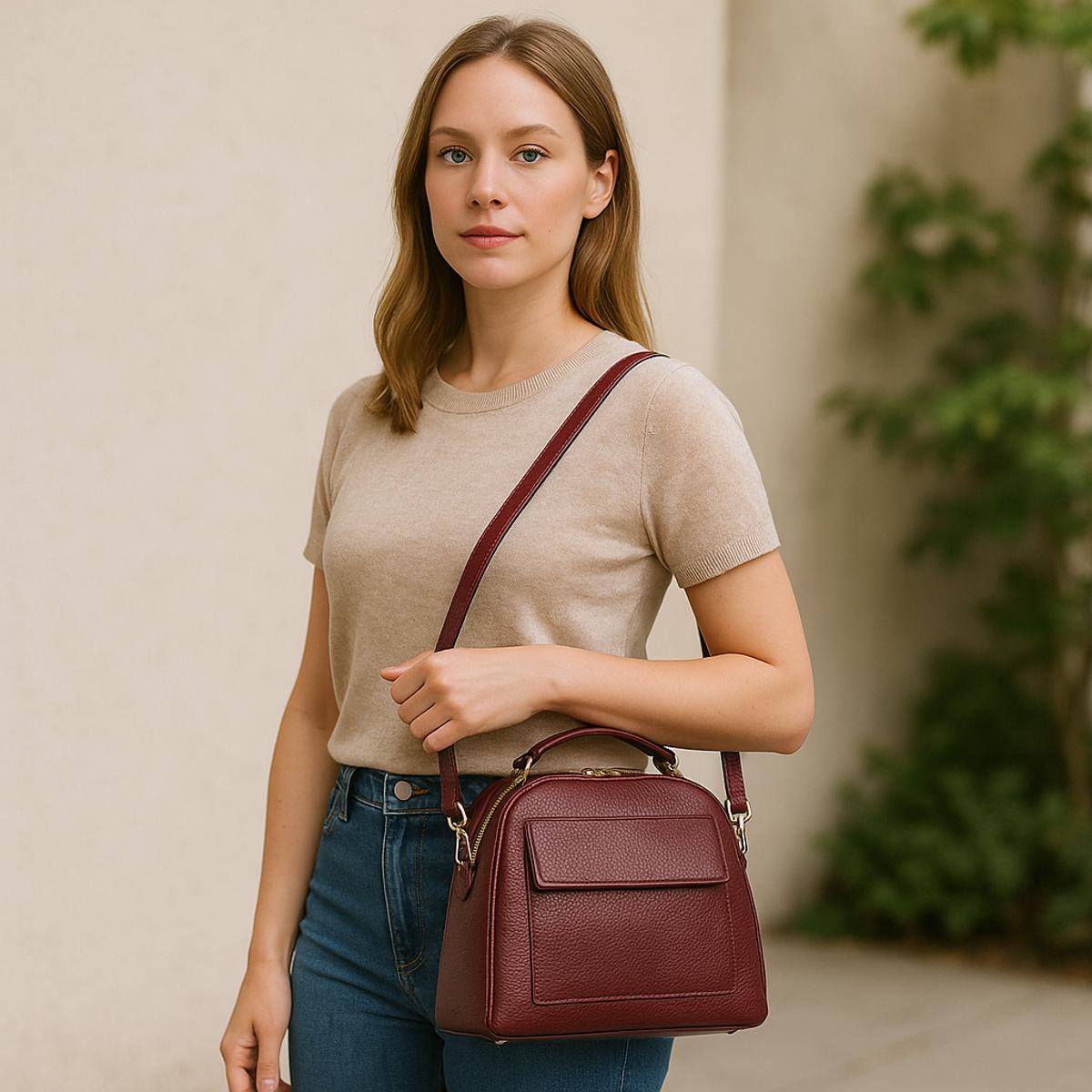
2) Your easy daily & weekly routine
Daily (30–60 seconds)
- Wipe down dry: Use a clean, soft cloth to remove dust and surface grime.
- Handle with clean hands: Oils transfer easily; a quick hand wash prevents darkening on handles.
- Smart parking: Avoid setting the bag on damp tables, grass, or rough concrete. Use a hook or keep it on your lap.
Weekly (3–5 minutes)
- Gentle clean: For protected leathers, a slightly damp cloth with a tiny drop of mild, pH-neutral soap works for surface build-up; follow by drying with a soft towel. For aniline, stick to a dry brush/cloth unless spot cleaning (test first).
- Check high-wear areas: Handles, bottom corners, zipper gussets. Address scuffs early.
- Air out the interior: Remove contents, shake out debris, and lint-roll fabric linings.
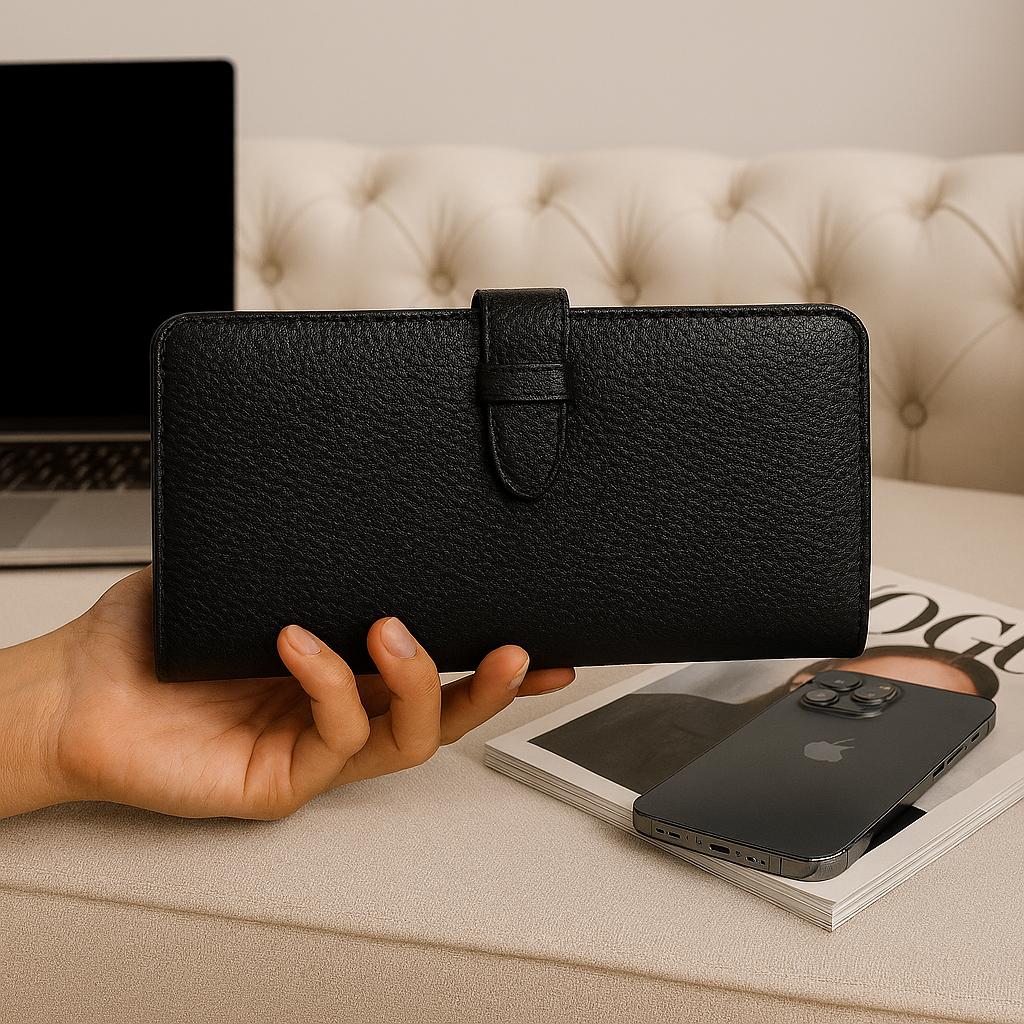
3) Deep clean & conditioning (step-by-step)
Frequency: For most protected top-grain handbags in regular use, a seasonal deep clean and light conditioning is a sensible baseline. Increase frequency with heavy daily wear; decrease for occasional use. Always patch-test in a hidden spot.
What you’ll need
- Soft microfiber cloths (at least 3)
- Soft brush (horsehair or equivalent)
- Leather-specific cleaner (suited to your finish)
- Leather-specific conditioner (light, non-greasy)
- Optional protectant (waterproofing spray for aniline/nubuck/suede; always test)
Steps
- Dust & dry wipe: Empty the bag. Brush seams and grain; wipe all surfaces with a dry cloth.
- Clean: Apply a leather-specific cleaner to a cloth (never directly to the bag). Work in small sections, light pressure. Immediately buff with a second clean cloth.
- Dry naturally: Let the bag air-dry away from heat and direct sun.
- Condition (if needed): Apply a small amount to a cloth and massage thinly and evenly. Wipe any excess after a few minutes. Less is more—over-conditioning can attract dirt.
- Optional protection: For open-pore leathers (aniline) or when you want extra repellency, use a suitable protectant. Spray lightly at recommended distance; allow to dry fully.
Important: Avoid harsh household chemicals (multi-surface sprays, bleach, ammonia, abrasive powders), and avoid saturating leather. For ink or dye transfer, skip scrubbing—see the stain playbook below.
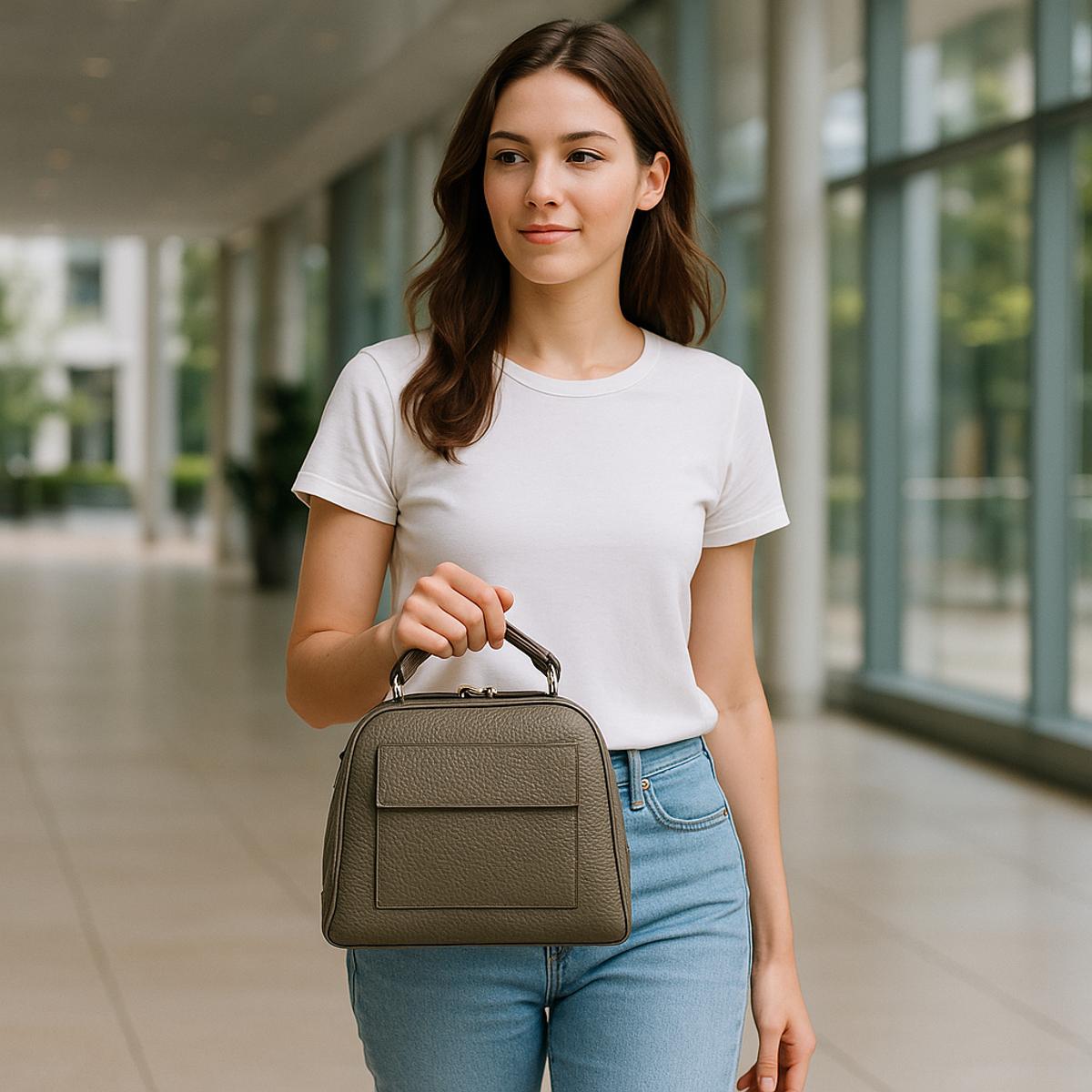
4) Stain removal playbook
Before you begin: Identify your leather finish and always test in a hidden spot first. When in doubt—especially with aniline, suede or nubuck—consult a professional.
Water spots
- Blot moisture immediately with a dry, absorbent cloth. Don’t rub.
- Let the area air-dry naturally—no hairdryers or radiators.
- On protected leather, if a ring remains, lightly wipe the whole panel with a barely damp cloth to even out the tide line; dry, then condition sparingly.
Oil/grease
- Blot (don’t rub) with a dry cloth.
- On protected leather, a leather-specific cleaner can help. Avoid kitchen degreasers and solvent-based products.
- For stubborn spots on suede/nubuck, sprinkle a little cornstarch, leave overnight, then brush gently. Repeat if needed.
Ink
- Act quickly—fresh ink is far easier than set ink.
- On protected leather, use an ink-specific leather cleaner if you have one; work with a cotton swab, minimal pressure.
- For aniline/suede/nubuck, avoid DIY solvents. Professional help is recommended to prevent spreading or dark halos.
Color transfer (e.g., dark denim)
- Prevention is best: be cautious with brand-new dark jeans and other saturated fabrics.
- If transfer occurs on protected leather, clean gently with a leather cleaner as soon as possible; conditioning afterward can help even appearance.
- For light, open-pore aniline, seek professional advice to avoid driving dye deeper.
5) Suede & nubuck: special care
These leathers have a raised “nap” that gives them a plush look and feel. They’re breathable and luxurious—but more absorbent. Treat them differently:
- Brush regularly: Use a suede/nubuck brush to lift the nap and remove surface dust. Brush in one direction; go gentle around seams.
- Use an eraser/block: A suede eraser helps lift shiny spots and small scuffs.
- Liquid with caution: If you must spot-clean, use products designed specifically for suede/nubuck and let them dry naturally. Avoid soaking.
- Protector spray: Apply a suede/nubuck protectant as directed; reapply periodically and after cleaning.

6) Storage & mold prevention (what to use—and what to avoid)
Good storage is half of leather care. The goals: steady humidity, mild temperatures, airflow, and darkness.
Smart storage setup
- Clean before storing: Wipe down and let the bag dry completely.
- Use breathable covers: Dust bags or pillowcases allow airflow. Avoid plastic bags and airtight bins, which trap moisture.
- Shape support: Lightly stuff the bag with acid-free tissue (or clean, undyed cotton). Avoid crumpled newspaper inks and overfilling.
- Airflow & spacing: Store upright on a shelf with a little space around the bag to prevent crushing and color rub.
- Humidity control: Aim for a comfortable indoor range; avoid damp closets. If your room is humid, use a dehumidifier for the space (not sealed in the bag).
About silica gel & “moisture absorbers”
Desiccants aggressively lower humidity in enclosed containers and can overdry organic materials like leather. If you live in a very humid climate, it’s safer to control the room’s humidity (dehumidifier/ventilation) and keep the bag in a breathable dust cover rather than sealing it in a box with desiccants.
Mold & mildew
- Watch for musty smell or fuzzy spots, especially after humid weeks.
- At first sign, move the bag to a dry, ventilated area and gently wipe the surface with a barely damp cloth followed by a dry cloth; let it air out thoroughly. For persistent growth or delicate finishes, consult a professional.
7) Sunlight, heat & climate tips
- Sun = fading + drying: Keep leather out of direct sun and spotlights for prolonged periods (window sills, car dashboards, bright display lighting).
- No heat guns/hairdryers: Always let wet leather dry at room temperature.
- Hot cars & radiators: Avoid leaving bags near heaters or in cars on hot days—rapid temperature swings stress leather and finishes.
8) Hardware, zips & keeping shape
- Hardware: Wipe fingerprints and moisture from metal parts. Avoid metal polishes unless you’re experienced; residue can stain leather.
- Zippers: Keep grit out by occasional gentle brushing. If a zip feels stiff, a tiny touch of zipper wax (applied away from leather) can help.
- Don’t overload: Overfilling strains handles and deforms panels. Rotate bags to give straps a rest.
9) Top mistakes to avoid
- Using household cleaners, alcohol wipes, or bleach on leather.
- Scrubbing stains aggressively (drives color deeper or abrades finish).
- Soaking leather or drying with heat.
- Sealing leather in plastic bins or using strong desiccants inside dust bags.
- Skipping test patches before using any new cleaner, conditioner, or spray.
Care-friendly LeatherLuxe favorites
- Barrel Shoulder Bag (Top-grain) – resilient everyday finish, easy upkeep.
- Structured Satchel (Top-grain) – wipe-clean routine, beautiful grain.
- Top-grain Clutch – simple weekly wipe keeps it photo-ready.
10) FAQ (fast answers)
How often should I condition my bag?
There’s no one schedule for every leather. As a seasonal baseline, condition protected top-grain leather after a deep clean and whenever the surface looks dry. For aniline, use very light applications and always test first. If a bag still feels supple and looks rich, don’t force conditioner—overuse can attract dirt.
Can I use baby wipes or vinegar?
We don’t recommend it. Household wipes and acidic solutions can disturb finishes and strip natural oils. Use a cleaner specifically formulated for leather instead, and always patch-test.
What about rain?
Blot moisture with a dry cloth and let the bag air-dry naturally, away from heat sources. For open-pore leathers and suede/nubuck, apply an appropriate protectant ahead of time for added repellency.
How do I avoid denim dye transfer?
Wash new dark denim a few times before pairing with light-colored bags, avoid close rubbing at seams, and clean any transfer promptly with a leather-specific cleaner.
Storing for a few months—what’s the safest setup?
Clean and fully dry the bag, lightly stuff with acid-free tissue, place in a breathable dust bag, and store upright in a cool, ventilated, dark cupboard. Control room humidity rather than adding desiccants into sealed covers.
11) Printable care checklist
Everyday
- Dry wipe after wear
- Keep away from damp surfaces & direct sun
Weekly
- Light clean (per finish)
- Check corners, handles, zips
Seasonal
- Deep clean; condition if needed
- Refresh protectant (aniline/suede/nubuck)
- Review storage setup
Questions about the right cleaner or protectant for your specific LeatherLuxe bag? Message our team with your model and finish—happy to recommend a product and a routine.
